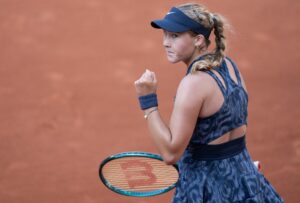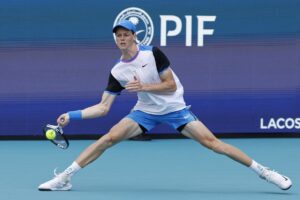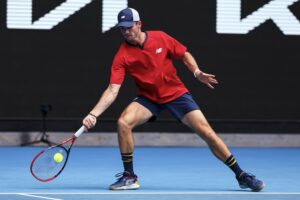Staying true to your game plan used to be what players believed would lead them to victories. Today, it’s the ability to be flexible and be liberal minded when it comes to making any kind of changes to win. The “King of Clay” was Rafael Nadal’s nickname, and most thought nothing of taking it for granted that he’d win most clay tournaments. But times and players are changing, putting Nadal’s strategies at risk. “I’m not thinking about making big improvements but small improvements and that’s all,” Nadal had said concerning his game tactics dealing with players at the Monte Carlo Rolex Masters this year. There is much diversity now and players are not only concerned with their comrades but opponents of all ages and skills.
The elite players have been in the game for decades and there isn’t a strategy they haven’t tried and either won from or lost. They’ve have had long careers with many injuries but are on tour for the duration, whenever that may be or whenever it ends. They know Nadal’s game and he knows theirs. Novak Djokovic was the player to beat, and after a resurgence from elbow surgery, he still is. But it was back in the day that Djokovic gave Nadal issues on trying to dismantle his game. The Spaniard had said in a promotional for Tennis Magazine that “In 2011, my problem was Djokovic because I was winning against everybody and losing against him in the finals.” Nadal also admitted that “Last year I didn’t compete well enough against the other players…”
When it comes to the NextGen or close to the 21-year-olds, Nadal always tries to put his “A” game in effect, and did so last year with Nick Kyrgios at Beijing. He sliced and spun in his shots as commentators had said “Fantastic tennis, once more from the World #1…the serve was set up and Nadal took full advantage…Nadal is king in Beijing…” commentators screamed for joy as Rafael Nadal won the Beijing title over Nick Kyrgios. But he wasn’t finished. The Spaniard would go on to defeat Alexander Zverev in the final of the Italian Open to win the title this year. There was much stress and pressure on Nadal and at this year’s US Open semifinal against Juan Martin del Potro, he had to retire while two sets against the Argentinian because of a knee injury. At the Rogers Cup, Nadal took on Stefano Tsitsipas, a very skillful NextGen to say the least, and blasted his game winning his fourth Rogers Cup title 6-2, 7-6. But it was this year’s Madrid Open the racket came down on Nadal and he was defeated in the quarterfinals by Dominic Thiem. The Spaniard wasn’t the “King of Clay,” then as he hadn’t lost a set since last year in 2017. At that point of his defeat, Roger Federer had become the #1 in the world. It caused possible doubt within Nadal as if he could beat Thiem in the near future, and commentators were surprised as Annabel Croft of Sky Sport had said “It really was bizarre…Thiem completely raised his level…he was playing with freedom and absolutely went for broke. It was one of those golden matches…”
As for Dominic Thiem, he was just as surprised because it was on clay, Nadal’s choice of surface. The Austrian admitted that “On clay, I think it’s one of the biggest challenges in sports to beat this guy or to compete with this guy…I hope that it’s a little bit more comfortable on hard court, but I’m not sure…Nobody’s game really matches up well with his…” Thiem had said concerning playing Rafa at the US Open or another tournament on hard court. But it wasn’t to be, and Nadal dominated Thiem at the US Open in the quarterfinals.
Rafa Nadal plays his game and has multiple variations as to the strategies on being victorious; whether it’s playing opposite a veteran or top ranked player as himself or even a NextGen such as Alexander Zverev, he is willing to find the key, one variation to uproot his opponent’s game and come out the victor in the end. He may be concerned about opponents but Nadal knows that’s part of the game and he feels challenged to play it as long as he can and be victorious whenever he can.






